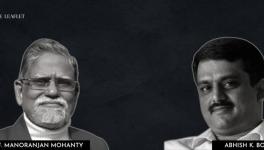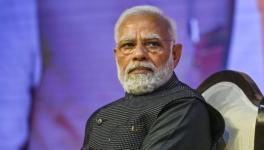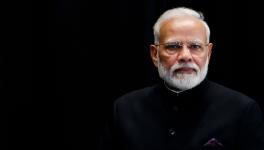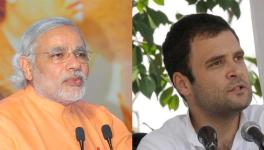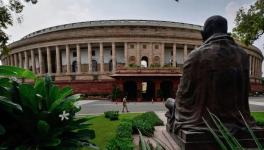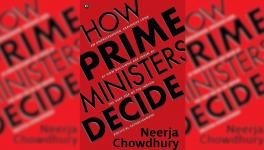Modi’s Speeches Are All About Himself: Why That is Bad for BJP
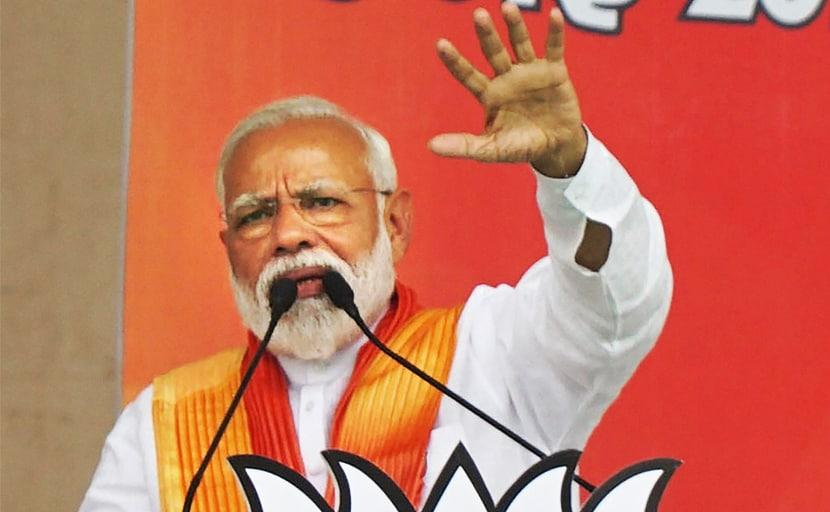
In the 32 hours of speeches Modi gave during the month leading up to his re-election campaign in 2019, there was one constant: himself. It was not unusual to hear him address the rallies thanking himself, thanking his policies, and thanking his vision. As during the 2014 general elections, the 2019 elections witnessed the ubiquity of Modi’s image on billboards, posters, digital advertising on social media, and websites.
University of Michigan communication scholar Swapnil Rai refers to this phenomenon as “celebritisation of Indian politics,” a kind strategic mobilisation of digital technology, social, and traditional media in creating celebrity-like affect and aura around the Modi persona. While such celebritisation of individual politicians is not unusual in India’s party politics, Modi’s speeches are particularly replete with references to himself.
If history is a lesson, Indira Gandhi’s massive footprint on the Indian National Congress shows the danger of such acute personality-driven politics. Gandhi came to power because she seemed to have paradoxical political qualifications, most significantly of distinctness (as the daughter of the first prime minister, Jawaharlal Nehru) and ambiguity (as having no policy vision). Yet, she successfully united the polycentric structure of Congress after Nehru’s death.
What followed, however, has been referred to by political scientist Sudipta Kaviraj as a “Ceasearist regime” where any dissent within the party was stomped out, decisive decisions were taken without much collaboration or consultation, and the vision of a dynastic rule took shape. After Rajiv Gandhi’s assassination, the Congress could never really gain back its luster though it remained in power for another decade.
Today, 25 years later, as we find the Congress in utter disorder, it is clear that what was once a postcolonial organ for national development had become an exclusive instrument for retaining power. Essentially, the Congress party became an elaborate parliamentary machine where big money was permitted to open its coffers to underwrite elections and a perceptible aversion grew within the party leadership to any responsibility, which left it ideologically rudderless.
Outside of the Gandhis, other senior leaders, though senior in years, were seen as bereft of courage or wisdom, apparently taking no responsibility for the disconnect between the governing and the governed. By the 21st century, the party became a symbol of sycophancy with leaders competing with each other to be the loudest chorus boys for the family, totally oblivious of the changes taking place at the electoral grassroots.
In the international scene, the meteoric rise of Donald Trump in the Republican Party and the public muting of the United States Senate and House leaders shows how such politics can upend traditional party dominance. Most Republican leaders no longer speak to the media and try to stay out of the limelight, partly in fear and partly in deference. While some critics have called Republicans a “party of sheep”, the harshest words came from the conservative political commentator, George Will, who said in a recent interview, that the Republican Party under Trump was “docile, supine and invertebrate.”
Even if most Republicans believe that Trump is bad for the long-term health of the party, they face a major here-to-there problem. Turning against Trump seriously jeopardises their immediate political fortunes. Trump’s theory of power has sucked the air out of the Republican Party’s traditional ideals of neoliberalism and global security and replaced them with a pseudo-nationalist fervor of “Trump First, America Later.”
Unlike Trump, whose speeches and tweets have been pure narcissism, Modi’s speeches are less direct but equally self-referential. One element of his speeches is his constant reference to himself in the third person. In one 41-minute speech given at Banda, Uttar Pradesh on 25 April, he referred to himself in the third person 30 times. While one could debate the psychological reasons for the use of such a linguistic tactic, in Modi’s case, he uses third personism to extol his own success and to deflect criticism.
Another element of this politics is that every public policy statement is personalised, as if Modi’s personal experiences are what drives national policy decisions. For example, he describes the need for bathrooms in homes for “sisters and mothers” of our country because “I have seen my own poor mother endure humiliation by having to go outside of the home.”
A third element in Modi’s speeches is his obsessive focus on crowd size. As he has gleefully noticed, at multiple rallies, leading up to counting day, “I see janta as far as the eyes can see.” He makes it transparent that crowds come to see him, even though each of his speeches and appearances at these rallies are either preceded or followed by speeches from various other BJP politicians and ministers.
This omnipresence of Modi is juxtaposed with the complete absence of references to any other BJP politician. He never acknowledges another cabinet minister or lawmaker from his party for helping with any aspect of governance, policy writing or implementation, or campaigning. BJP is made synonymous with Modi.
WHAT DOES ALL THIS MEAN FOR BJP?
Much has been written about Modi’s fortuitous rise to power. A coalition of brute interests—rising Hindutva, coalescing of business and power elites, and a wealthy conservative diaspora—had given Modi the edge over other competing political stakeholders. But if there is one thing to learn from history it is that as BJP hyper-centralises Modi, the party loses its political charisma—and the very reasons for which the people supported its rise to power.
When and if Modi retires from public life, the power vacuum will be loud. Keeping the Modi lahar (‘wave’) will be difficult if there is no policy initiative that the second-tier leadership will be able to point to as their mark of achievement. If it has always been about Modi—and his political acumen—why would an astute voter turn to a no-name party pracharak? Even the party bureaucrat Amit Shah, who has stayed in relative shadow, seems unabashedly what he is: a shadow.
While it is far too early to do an autopsy of post-Modi BJP, history tells us that no party stays in power as a one-person show. Congress was at its flourishing best when it included varied thinkers and vanguards. Nehru’s cabinet was a who’s-who of intellectuals and policy mavens and it faced extinction the moment it hitched its fortunes to one Gandhi. The BJP appears to be moving in the same direction.
Shakuntala Rao teaches at the Department of Communication Studies, State University of New York, Plattsburgh. Views are personal.
Get the latest reports & analysis with people's perspective on Protests, movements & deep analytical videos, discussions of the current affairs in your Telegram app. Subscribe to NewsClick's Telegram channel & get Real-Time updates on stories, as they get published on our website.











